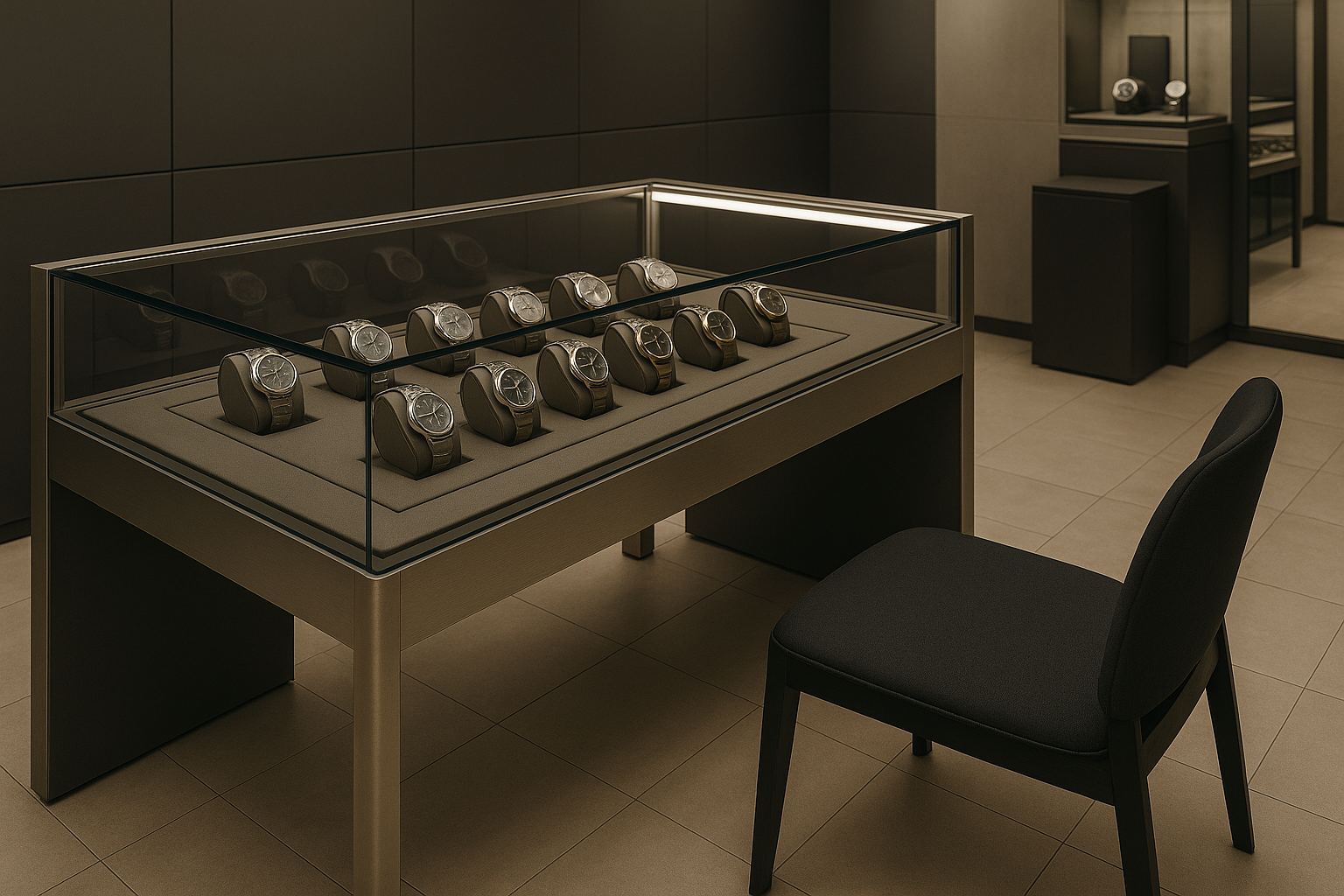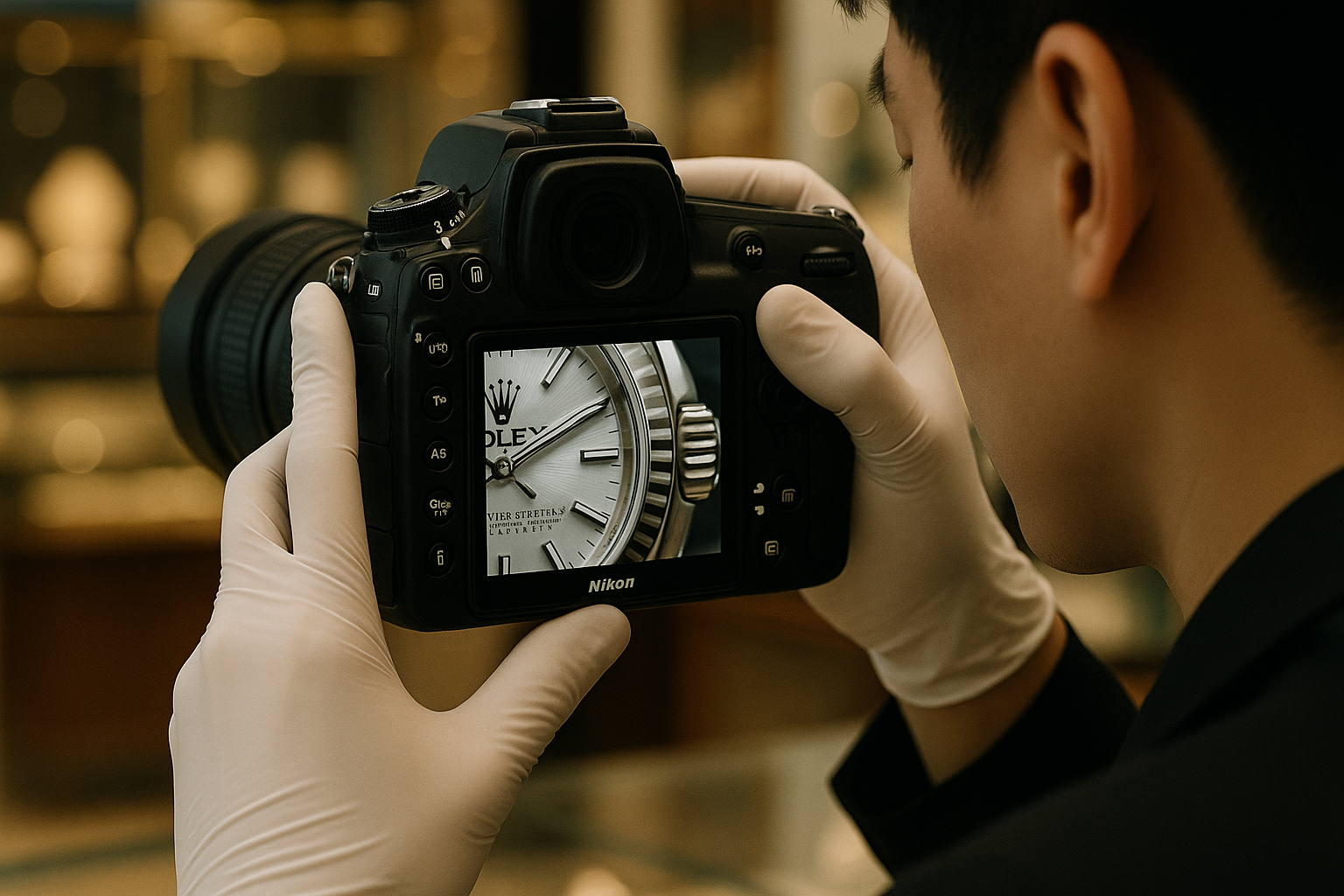Welcome to Real Log, where we share stories from the field. Today, we present real challenges and solutions from the high-end product distribution industry, where diamonds and luxury watches worth $14,500 to $65,200 are handled daily.

"This watch costs almost as much as a used luxury car. Even a single scratch needs to be documented."
This comment came from a brand manager at a pre-owned luxury watch distributor, pointing to a Rolex timepiece. The product was nearly new and valued at over $14,500.
Recently, we've had consecutive meetings with companies handling diamonds, precious metals, and luxury watches. From distributors handling Rolex, Omega, and Cartier products to diamond rough distribution companies. Listening to the common concerns these businesses share reveals unique realities specific to the ultra-high-value product industry.
Representatives from diamond and gemstone distribution companies shared these insights:
"When customers make purchases, we show them everything from the diamond ring's design to the girdle's shape under magnification."

While they thoroughly examine and explain every detail using magnifying equipment during the sale, proving the original condition becomes challenging when complaints arise months later. This creates extremely difficult situations for verification.
The same applies to pre-owned luxury watch platforms. When a single timepiece costs $7,250-$14,500, and customers claim "the dial pattern looks different from what I saw" or "the case back scratches appear deeper," verbal explanations have clear limitations.
Due to the nature of high-value products, issues are more likely to surface after purchase rather than immediately, and companies must be prepared to respond to inquiries at any time—this is a shared experience across the industry.
We had the opportunity to observe actual inspection processes at luxury watch boutiques. Using DSLR cameras to capture close-up shots of every watch surface, examining everything from minute scratches on the bezel to play in bracelet connections at truly "microscopic levels." Some diamond companies even employ electron microscopes.
However, this precision photography comes with practical challenges. DSLR captures create enormous file sizes that must be individually saved to PCs, then later retrieved and shared with customers or partner companies. This process is not only cumbersome but also prone to oversight and missing files.
Particularly noteworthy was how distribution partners want to verify product conditions themselves. Rather than sending materials separately each time, granting system-level permissions for anytime access would benefit all parties involved.
A diamond wholesale company specifically mentioned wanting this approach for retail partnerships. When retailers receive product condition inquiries from customers, they could verify information in real-time without repeatedly contacting wholesalers, significantly improving operational efficiency.

Meeting with multiple companies revealed that each uses different equipment. Some rely on DSLRs, others on electron microscopes. The strong preference was to continue using familiar equipment while making management more convenient, rather than building entirely new environments. Staff members are already comfortable with existing tools, and learning new systems would create unnecessary burden.
Field requirements aren't for complex systems, but tools that make current workflows more efficient and transparent. Beyond just successful photography, the complete process matters: securely storing high-quality footage long-term and instantly sharing with partners or customers when needed.
Whether cloud-based or local, systems must safely retrieve content even after extended periods. Given the large file sizes of high-quality footage, efficient management systems are essential.
An ultra-high-value distribution company president explained the significance of Advanced Video Documentation Systems:
"Having Advanced Video Documentation Systems isn't just about dispute resolution. It's a measure of how meticulously we manage products and how transparently we conduct business."
Brands dealing with high-value products understand that responsibilities don't end at the point of sale. Many brands now use Advanced Video Documentation Systems to maintain quality accountability throughout the customer journey, building lasting trust relationships.
Meeting various companies made one thing clear: the high-value product industry is shifting from "inspection" to "condition verification" as the new standard.
When asked, "Isn't proper packaging and shipping sufficient?" experienced professionals shake their heads. They know from experience that high-value products require more than simple text descriptions or verbal explanations.
Seamless integration with existing equipment for photography, instant sharing of Advanced Video Documentation Systems with partners and customers, and long-term stable storage—all these elements must work organically together to create truly "field-ready practical solutions."
In high-value product distribution, the real challenge begins after the sale, not at the point of purchase. Due to the nature of products worth $14,500-$65,200, disputes that emerge over time significantly impact brand trustworthiness.
Companies we met in the field commonly possessed precision inspection equipment. The issue was the absence of systems for systematically managing and transparently sharing those records.
Rather than introducing new equipment, the key lies in integrated systems that naturally connect with existing DSLRs or electron microscopes while providing stable long-term footage storage and instant sharing capabilities when needed.
Ultimately, competitiveness in the high-value product industry is shifting from "product quality" to "condition verification capability." Only companies equipped with transparent documentation systems trusted by both customers and partners will achieve sustainable growth.